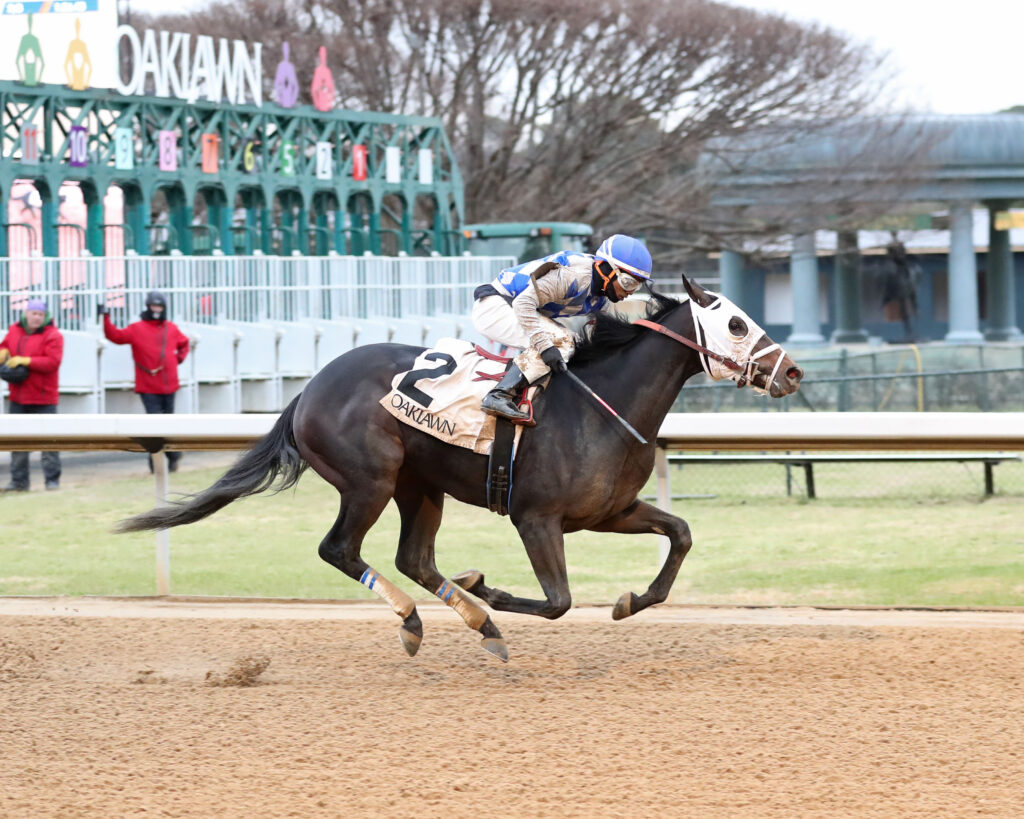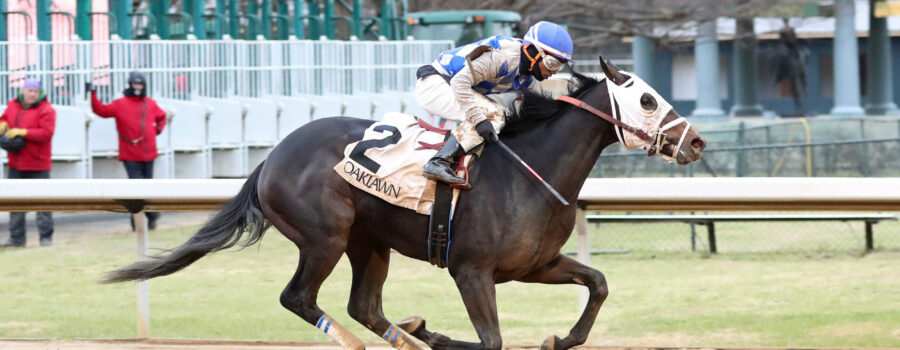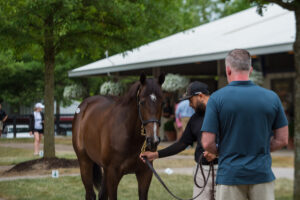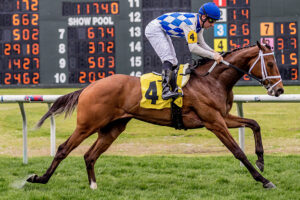Most new investors walk into a yearling sale with confidence and walk out with a mistake.
They think they’re being smart. They’ve watched the videos. Read the catalog. Listened to the agent talk up the pedigree. The prospect stands tall, moves with energy, looks the part. It just feels like a winner.
But the yearlings that stand out for all the obvious reasons are often the easiest to lose money on.

The Yearling Sale Trap
The auction ring is built to impress. Everything is designed to catch your eye: how the yearling steps, how it carries itself, how it draws attention. And when you’re new, those surface cues can feel like green lights.
But a good walk can hide weak joints. Eye-catching presentation can distract from the mechanics that matter. Even a strong family on the page won’t fix what’s wrong in the way the horse uses its body.
It’s not what’s visible that gets you. It’s what you miss.
A Six-Figure Mistake at a Sale
I watched a first-time buyer spend serious money on a colt that checked all the standard boxes: recognizable pedigree, strong early buzz, standout presence at the barn.
It never raced.
There was a flaw behind. One leg consistently landed off-center. The angles didn’t support long-term pressure. If you weren’t trained to catch it, you wouldn’t. And the buyer wasn’t.
Right behind it in the ring was a lower-priced yearling that moved evenly and its feet landed true. That one went on to earn real money on the track.
What Matters When Evaluating a Yearling
Most buyers spend too much time looking at the front half of a horse: head, shoulders, stance. But the back half tells you far more.
That’s where acceleration begins. That’s where most injuries start. That’s where you find out whether a yearling is built for speed or built to break down.
Look for:
- Foot placement and limb alignment. Are the feet landing straight under the body or veering in or out? Are the joints tracking evenly?
- Power delivery. Is the yearling using both hind legs evenly or is one side carrying more load?
- Balance from left to right. Differences in muscle tone or step length often predict future breakdowns.
These aren’t just details. They’re deal-breakers.
Pedigree Can’t Carry a Weak Yearling
Bloodlines tell you what might happen. The horse in front of you tells you what’s likely.
Too many buyers use pedigree to justify yearlings with mechanical problems. They assume talent will cover the gaps. But in this game, mechanics beat hope every time.
The right approach? Start with how the yearling moves. If it passes the test, then look at the page.
How Strategic Buyers Think About Yearlings
Before: You’re drawn to presence. You assume if a horse moves well and has a strong family, it’s a smart play.
After: You question what others take for granted. You focus on how the yearling uses its body. You look for efficiency, not just style. You make decisions that hold up when the horse goes to training.
That change is what separates investors from speculators.
How to Avoid Sale Regrets
You don’t need to be an expert horseman. But you do need to start asking better questions.
Next time you’re evaluating a yearling, ask:
- Where is the power coming from and is it being used evenly?
- Are the limbs landing directly beneath the body or drifting off course?
- If there were no pedigree attached, would I still want this horse based on how it moves?
If that third answer is no, move on.
Want help spotting racehorses that actually hold up? That’s what we do. No pressure. No sales pitch. Just strategy that protects your investment.
Don’t let your first buy be your biggest regret. Book a consultation before your next yearling auction: https://calendly.com/clark-bloodstock-agent-ky/consultation







Recent Comments